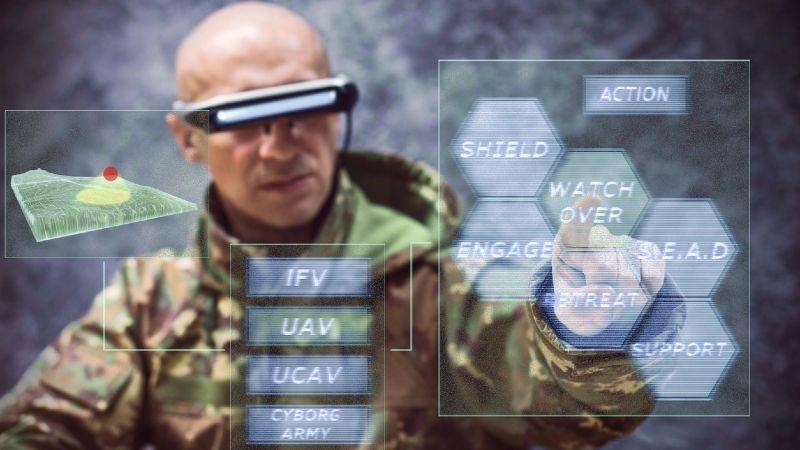Blog
The Future of Technology in Warfare

The Future of Technology in Warfare: From Drone Swarms to VR Torture
Geopolitical developments have raised fears of another world war. Technological advances mean it should at least be over quickly.
Warfare and technology make the perfect partners of destruction. Military innovations from wooden catapults to nuclear bombs have been transforming the way war is waged since prehistoric humans carved arrows from stones some 10,000
years ago.
The visions of futurists don't always match the experiences of military personnel, but the battlefields of the future will bear little resemblance to the war zones of today.
With governments meeting at the United Nations in Geneva yet again to discuss Lethal Autonomous Weapons Systems (LAWS) and the 'third revolution in warfare' it seems that highly automated robotic killing machines are closer than ever
to going from the realm of science fiction to being deployed in real-world battlefields.
This is the fifth time government representatives have met at the UN to discuss the realities of LAWS and the complications they will bring in to the world. The Guardian reports that America is promoting innovation in the field, but
others – including a Venezuela-led group of states seeking to regulate or ban LAWS entirely – fear that the genie could be out of the bottle when artificial intelligence is applied to weapons of war.
The Internet of Battle Things
Dr Alexander Kott of the US Army Research Laboratory recently published a whitepaper (PDF) on future scenarios for the "internet of battle things in highly adversarial environments" that imagines a wide variety of networked intelligent
systems competing for dominance on the battlefield.
These won't be too dissimilar from the warfare technology available today according to the report, like unattended ground sensors, guided missiles and drones, but will likely also include physical robots from those as small as insects
(see drone swarms) to large vehicles that carry troops and supplies.
"Some will fly, others will crawl or walk or ride," the report notes, adding that their functions will be diverse, from munitions designed to impose physical or cyber effects all the way through to the sensory functions of seeing or
listening.
In the cyber realm the report imagines intelligent, autonomous entities that crawl networks to protect communications or defend systems from cyber attack, while others might include the creation of "informational or electromagnetic
deceptions or camouflage".
"Yet others will act as situation analysts and decision advisers to the humans or physical robots," the report notes. "In addition to these, cyber robots might also take on more assertive functions, such as executing cyber actions
against the enemy systems."
Underpinning all this will be a significant advance in artificial intelligence where the autonomous tools will become 'useful teammates' of humans rather than tools used by them. This is "far beyond" the current state of AI, but the
report seems to expect leaps in machine learning will fill the gap and make this a reality.
In summary the author writes that intelligent things, both networked and teamed with human warfighters, will be a ubiquitous presence on the future battlefield – and that major advances in adversarial learning and adversarial reasoning
will support the cyber warfare of the future, with AI fighting cyber adversaries.
This is all, Kott notes, his opinion and not that of his employer.
Robot wars
Innovations in efficiency could mean soldiers' presence on the battlefield is no longer required. AI robots would be free of human error, but capable of catastrophic mistakes of their own.
It's a valid concern, as one day machines could be killing on their own initiative. Developments in automation may lead vehicles and weapons to identify and attack targets automatically through pattern-recognition algorithms.
Facial recognition could enable them to detect an individual and pull the trigger as soon as they're authorised.
Elon Musk and Stephen Hawking were among more than 1,000 signatories of an open letter demanding a ban on autonomous weapons published in 2015.
Daniel Jones, a senior analyst specialising in defence, police and security at market intelligence firm Kable, feels these fears are overstated.
"There's this almost sci-fi level of scaremongering about robots," he says. "You can be a little bit more optimistic sometimes and not shut off areas of research. AI could potentially be a benefit."
These benefits could include fewer civilian casualties thanks to enhanced risk determination and a reduction in mistakes caused by stress and exhaustion. But AI warfare remains a long way off.
"We've only just got a computer to beat a human GO player," says Jones. "Warfare is exponentially more complex than that. But what it will be used for initially is to reduce human burden."
The swarm is coming
The US Department of Defence began 2017 with a demonstration of a micro-drone swarm in California consisting of 103 drones collaborating in decision-making, adaptive formation flying and self-healing.
"The types of anti-air defences and missiles that we have in place are not designed to track things of that size. It would be almost impossible," says Jones.
"[But] that is a technology where you're going to have to see massive increases in battery power for things like that to work effectively."
Larger drones are currently limited by their radar observability, but stealth technology is set to change that.
Autonomous stealth drones such as the Taranis concept aircraft designed by British arms manufacturer BAE Systems can find and identify a target then request permission to strike from a human operator.
Cheap swarms of autonomous stealth drones armed with deadly weaponry could be coming soon.
It gets worse. BAE Systems envisions a future of organic drones "grown" in large-scale labs by digitising synthetic and materials chemistry from a molecular level upwards with a new machine called a Chemputer.
They'll be backed-up by self-driving boats in the sea. DARPA are trialling an unmanned vessel that tracks submarines called Sea Hunter which can travel thousands of miles without anyone on board.
Source : Tech World

